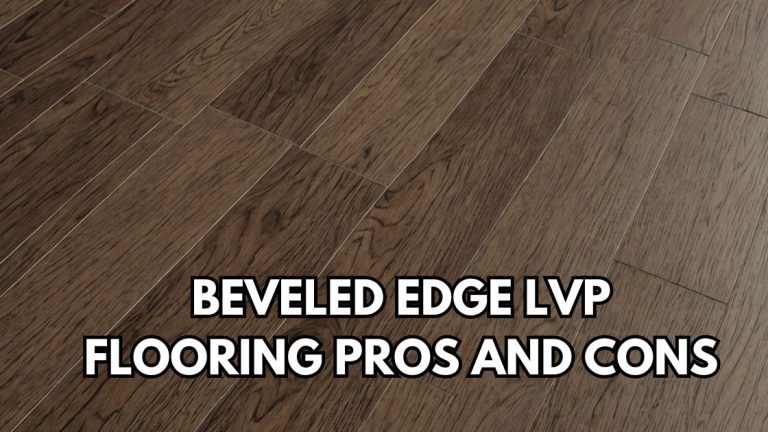Fire Resistant Flooring Materials: A Comprehensive Guide
When it comes to choosing flooring materials, safety is often as critical as aesthetics and durability. One of the key considerations for both residential and commercial spaces is fire resistance.
This guide explores the A to Z of fire resistant flooring materials, offering insights into their properties, benefits, and applications. The article includes a detailed table summarizing the materials for quick reference and dives deep into their features for a complete understanding.
Why Choose Fire Resistant Flooring Materials?
Fire-resistant flooring materials can significantly reduce the risk of fire-related damage, offering added safety and peace of mind. These materials are designed to withstand high temperatures, slow the spread of flames, and reduce smoke emissions, making them an ideal choice for:
- Residential homes
- Commercial spaces
- Industrial facilities
- Public buildings
Key Benefits:
- Enhanced safety and fire protection.
- Compliance with fire safety regulations.
- Durable and long-lasting performance.
- Low maintenance.
Types of Fire Resistant Flooring Materials
The following table provides an overview of popular fire-resistant flooring materials, their key characteristics, and applications:
| Material | Description | Applications |
|---|---|---|
| Ceramic Tiles | Non-combustible, durable, and available in various designs. | Kitchens, bathrooms, public spaces |
| Stone Flooring | Natural stones like granite and marble are highly fire-resistant and aesthetically pleasing. | Residential and commercial spaces |
| Concrete | A sturdy and non-flammable option ideal for industrial and modern aesthetics. | Garages, warehouses, modern homes |
| Vinyl Flooring (Fire-Rated) | Special fire-rated vinyl flooring offers resistance to fire and smoke emissions. | Commercial spaces, hospitals |
| Epoxy Coatings | Fire-resistant epoxy coatings are applied to concrete floors for added protection. | Industrial facilities, parking lots |
| Rubber Flooring | Fire-retardant rubber flooring provides safety and shock absorption. | Gyms, play areas, healthcare facilities |
| Glass Flooring | Fire-resistant glass panels offer a unique, modern design with high safety standards. | Luxury spaces, modern offices |
| Wool Carpets | Naturally flame-resistant due to the fiber’s structure and chemical composition. | Living rooms, bedrooms, hotels |
| Fire-Rated Laminate | Engineered with fire-resistant layers for enhanced safety. | Offices, retail spaces |
| Metal Flooring | Highly durable and resistant to extreme heat. | Industrial and high-tech spaces |
In-Depth Look at Fire Resistant Flooring Materials
1. Ceramic Tiles
Ceramic tiles are a popular choice for fire-resistant flooring due to their non-combustible nature. They are made from natural clay and fired at high temperatures, which makes them highly durable and heat-resistant. Available in various designs, they can enhance both safety and aesthetics.
Advantages:
- Resistant to fire and heat.
- Easy to clean and maintain.
- Wide range of styles and colors.
Applications: Ideal for kitchens, bathrooms, and high-traffic areas.
2. Stone Flooring
Natural stones like granite, slate, and marble are inherently fire-resistant. They provide a timeless and elegant look while offering excellent heat tolerance.
Advantages:
- Extremely durable.
- Adds a premium aesthetic appeal.
- Suitable for both indoor and outdoor use.
Applications: Common in luxury homes, commercial spaces, and public buildings.
3. Concrete Flooring
Concrete is a versatile and robust option that is naturally non-combustible. It’s widely used in industrial and modern residential settings.
Advantages:
- High fire resistance.
- Customizable with stains or overlays.
- Affordable and long-lasting.
Applications: Warehouses, garages, and contemporary homes.
4. Vinyl Flooring (Fire-Rated)
Not all vinyl flooring is fire-resistant, but fire-rated vinyl options meet stringent safety standards. They are designed to limit flame spread and smoke production.
Advantages:
- Cost-effective.
- Easy to install and maintain.
- Available in various designs.
Applications: Suitable for commercial spaces, schools, and healthcare facilities.
5. Epoxy Coatings
Epoxy coatings applied over concrete floors enhance fire resistance while providing a seamless and durable surface.
Advantages:
- High resistance to fire and chemicals.
- Customizable with anti-slip finishes.
- Easy to clean and maintain.
Applications: Industrial facilities, parking lots, and workshops.
6. Rubber Flooring
Fire-retardant rubber flooring is designed to resist ignition and reduce flame spread. It also offers excellent shock absorption and slip resistance.
Advantages:
- Safe and durable.
- Comfortable underfoot.
- Available in vibrant colors and patterns.
Applications: Ideal for gyms, playgrounds, and healthcare facilities.
7. Glass Flooring
Fire-resistant glass flooring combines safety with modern aesthetics. It’s made from tempered or laminated glass treated to withstand high temperatures.
Advantages:
- Unique, contemporary look.
- High fire safety standards.
- Durable and scratch-resistant.
Applications: Luxury homes, offices, and art galleries.
8. Wool Carpets
Wool is a natural fiber with inherent flame resistance due to its high moisture content and protein-based structure. It’s a sustainable and safe choice for carpeting.
Advantages:
- Eco-friendly and biodegradable.
- Soft and luxurious underfoot.
- Naturally resistant to fire and stains.
Applications: Living rooms, bedrooms, and hospitality settings.
9. Fire-Rated Laminate
Fire-rated laminate flooring is engineered with special fire-resistant layers that offer both safety and style.
Advantages:
- Affordable alternative to hardwood.
- Available in various designs and textures.
- Meets fire safety standards.
Applications: Offices, retail spaces, and multi-family housing.
10. Metal Flooring
Metal flooring, often made from steel or aluminum, is a robust option for fire resistance. Its sleek and industrial look adds a modern touch to spaces.
Advantages:
- Withstands extreme temperatures.
- Highly durable and long-lasting.
- Easy to clean and maintain.
Applications: Industrial facilities, tech spaces, and modern designs.
Factors to Consider When Choosing Fire Resistant Flooring
When selecting fire-resistant flooring, consider the following:
- Fire Ratings: Ensure the material meets local fire safety codes.
- Durability: Choose a material that suits the foot traffic and usage of the space.
- Aesthetics: Balance safety with design preferences.
- Maintenance: Opt for flooring that is easy to clean and maintain.
- Budget: Consider both initial costs and long-term value.
Conclusion
Fire resistant flooring materials offer a blend of safety, durability, and style, making them an essential choice for various spaces. Whether you’re designing a home, upgrading a commercial property, or outfitting an industrial facility, there’s a fire-resistant flooring option to suit your needs. Use this guide as a resource to make informed decisions and ensure your space is both safe and stylish.








